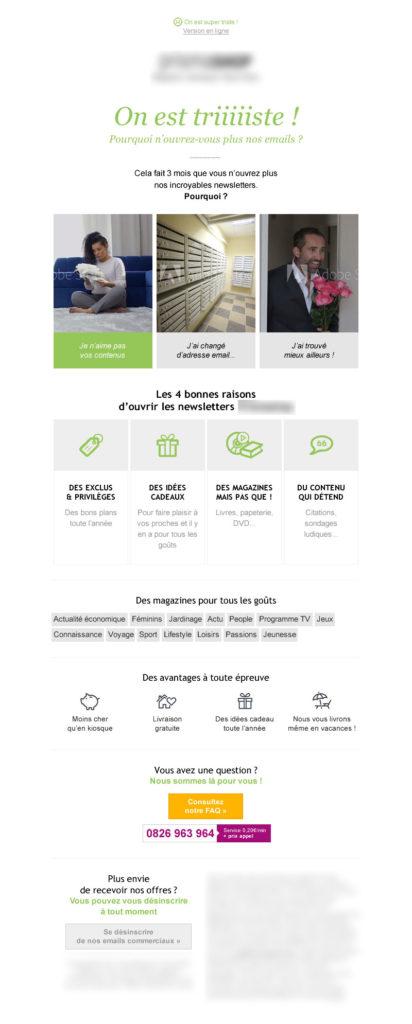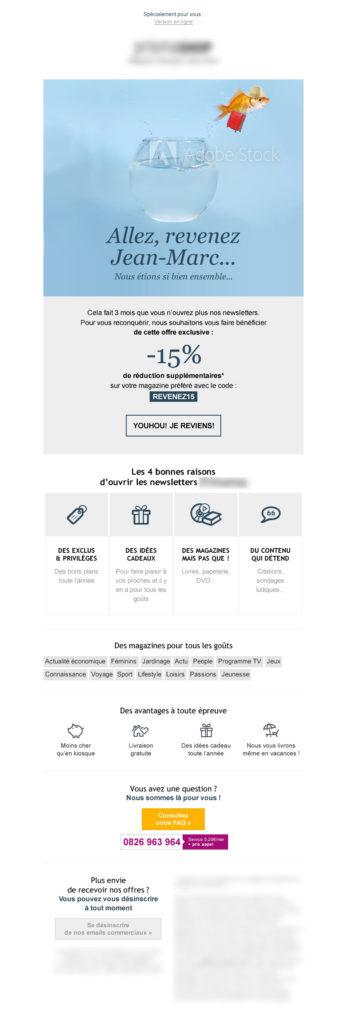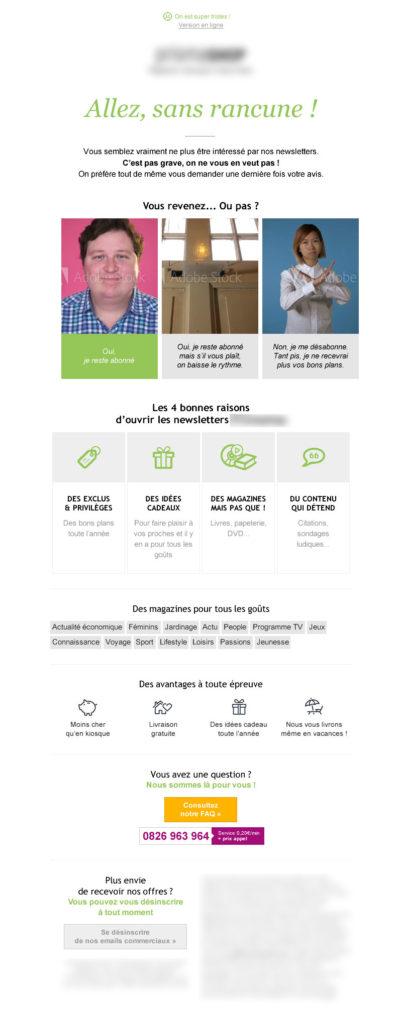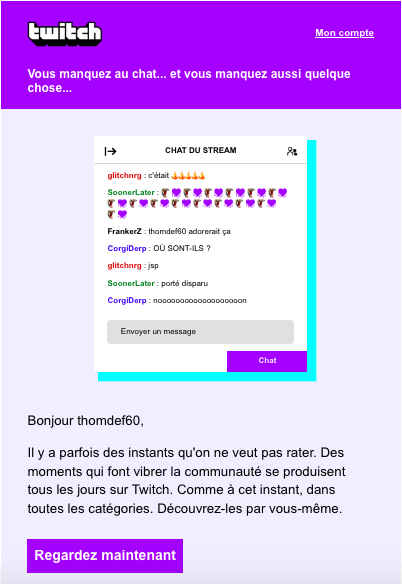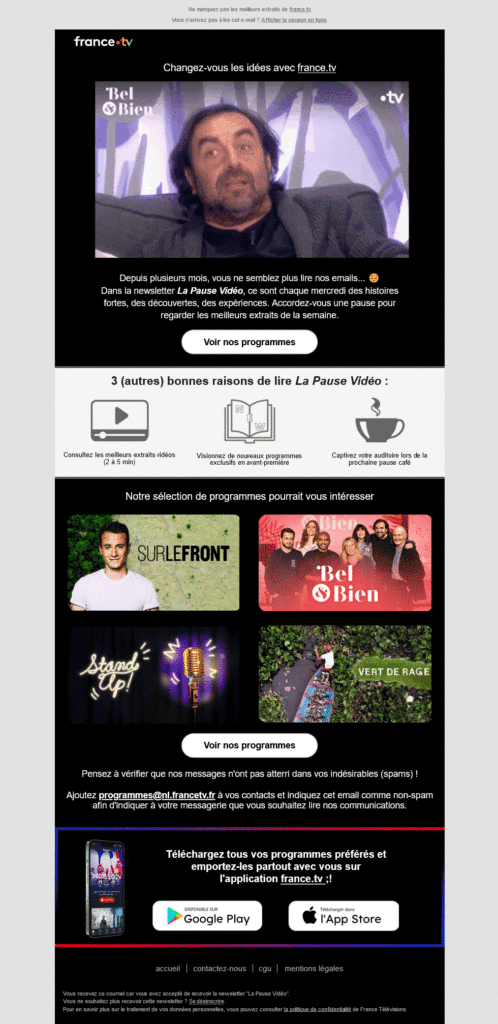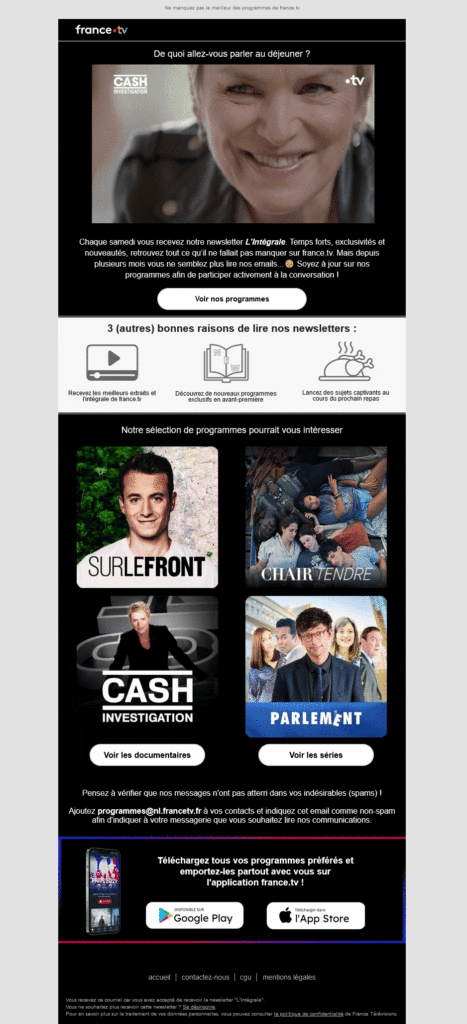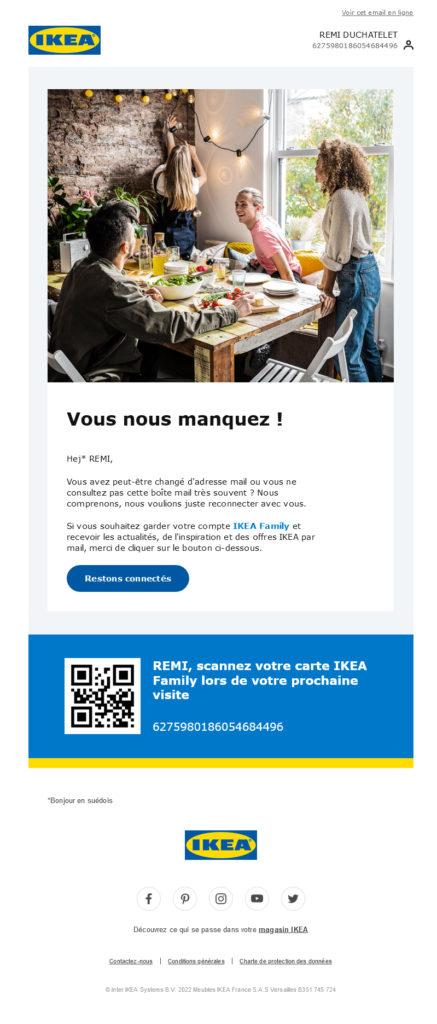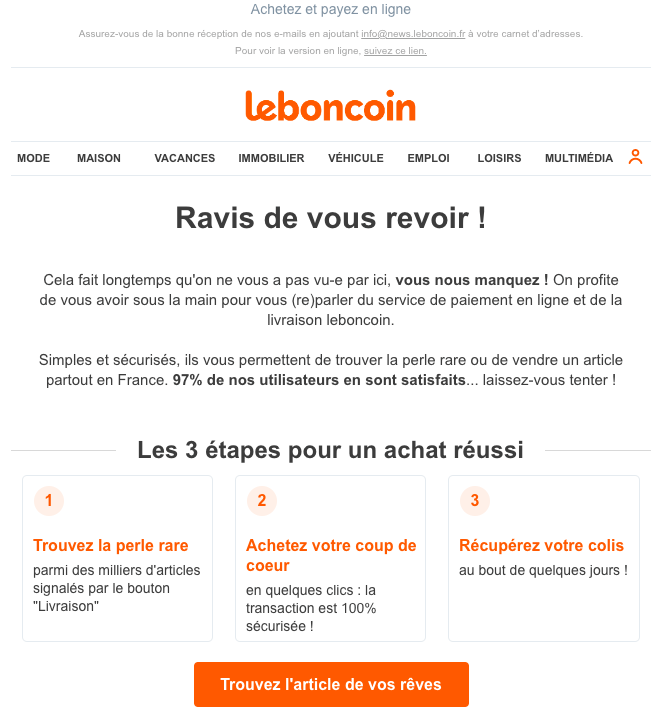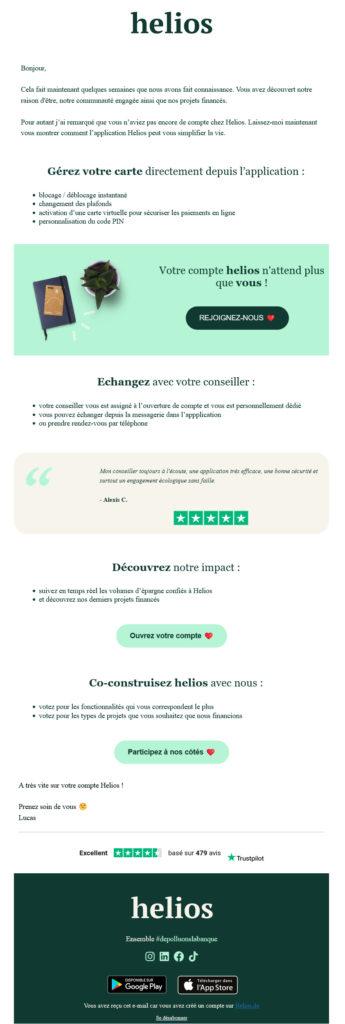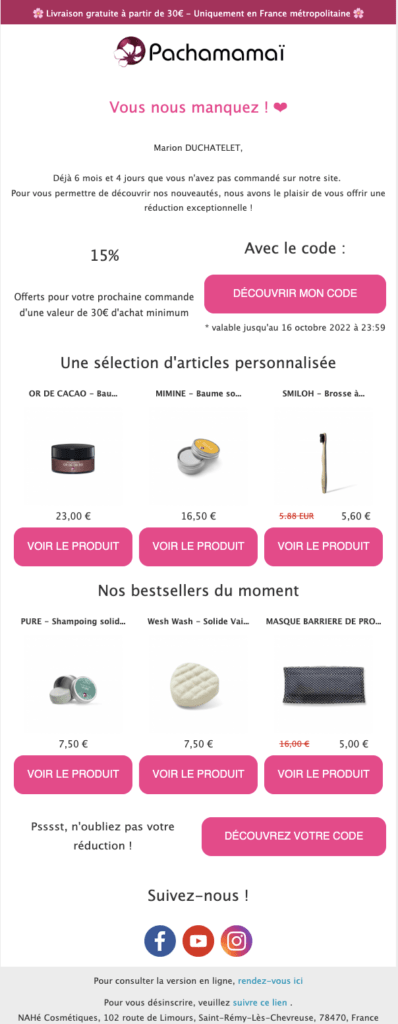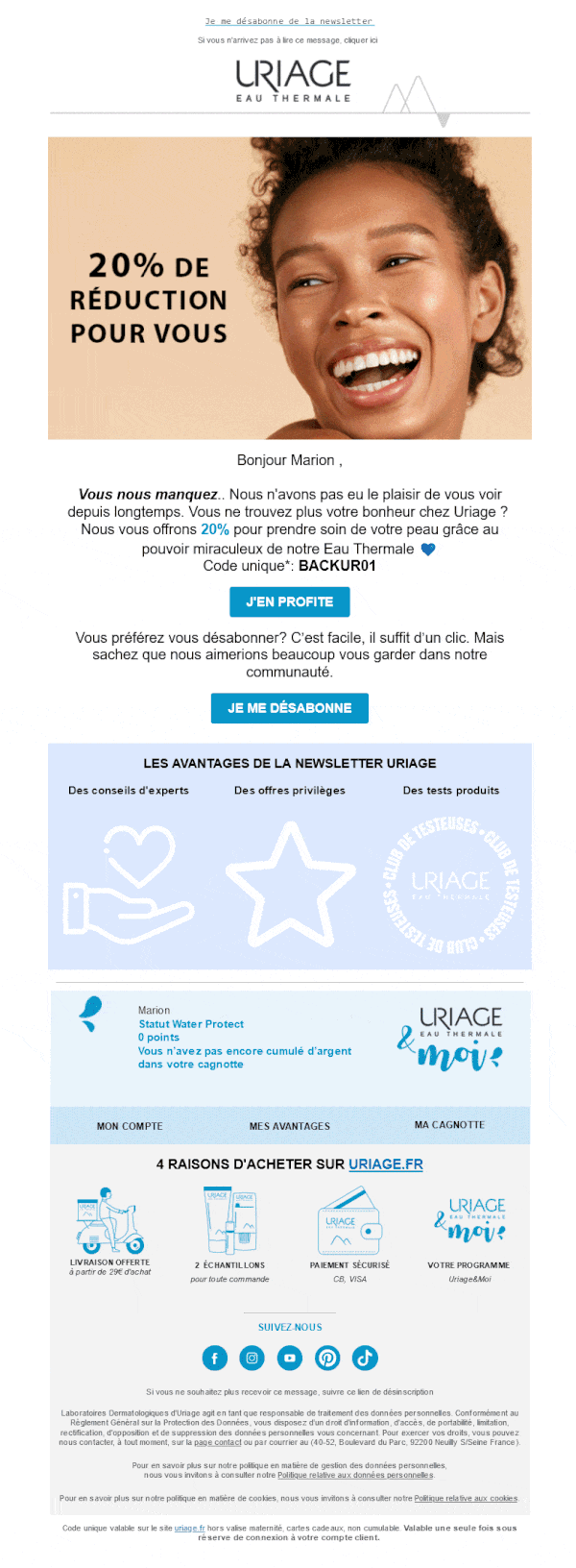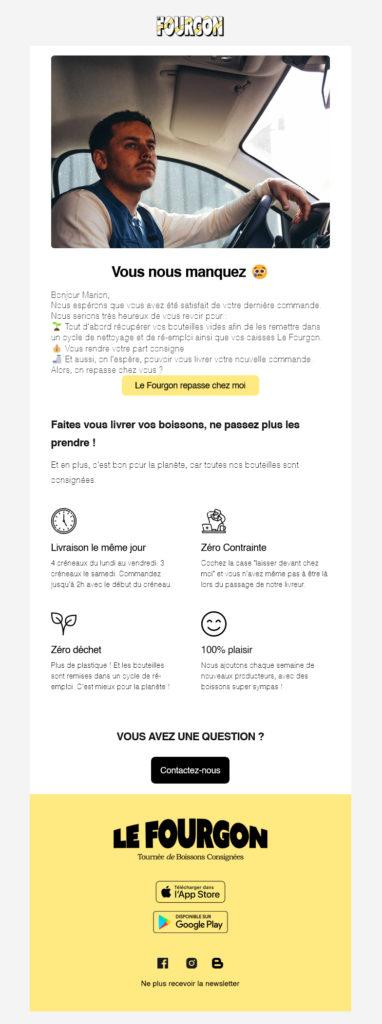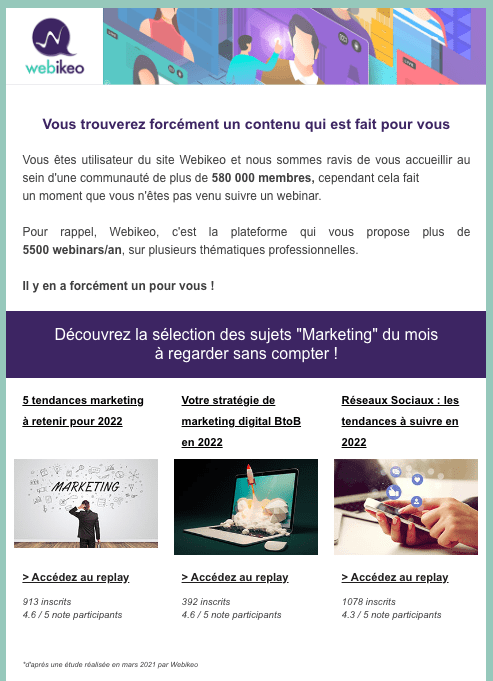When we make emailing strategy audits for our customers, it's not unusual to find that more than half of their contacts are inactive.
We usually define an inactive segment based on the email open indicator.
Since the arrival of iOS15, Apple Mail Privacy Protection makes email open rates even less reliable than before.
So how do you define inactive contacts and reactivate them?
Several solutions exist: preventive measures, automated reactivation programs, permanent exclusion... In any case, if you don't manage your inactives properly... the webmails will do the work for you. And it will be more violent.
Table of contents
- The impact of inactive addresses on an emailing strategy
- Live! Inactive emails: how to set and reactivate them from AMPP / ios15?
- Definition: what is an inactive contact in email marketing?
- Are open and click rates sufficiently reliable indicators of inactivity in email marketing?
- Get to know your inactive emailing contacts and customers: who are they?
- Preventive measures: reactivate your subscribers before they become inactive emailing
- Reactivate inactive contacts with an automated inactive address reactivation program
- Challenge the usual reactivation scenarios
- Examples of reactivation emails for inactive or dormant email addresses
- Examples of reactivation emails for inactive or ex-customers
- Badsender's conclusion on reactivating inactive contacts and customers in email marketing
The impact of inactive addresses on an emailing strategy
Inactive members of your emailing database can be a major problem for your business:
- Email deliverability problems spamming or blocking campaigns. Your sender reputation depends in part on your list's engagement rates: open rates and click-through rates.
- From campaign performance low that don't represent reality.
- A loss of potential income.
- Your brand's reputation downgraded Who likes to receive unwanted newsletters?
Live! Inactive emails: how to set and reactivate them from AMPP / ios15?
Badsender gave a live broadcast on this subject. To (re)watch it or (re)listen to it as a podcast, click here:
Definition: what is an inactive contact in email marketing?
There are 2 main ways to define an inactive email address in email marketing:
An e-mail address is considered inactive if it has not been opened or clicked on for a certain period of time.
As a rule, we define an inactive address as any prospect or customer who has neither opened nor clicked on your emails in the last 6 months.
There are several points to bear in mind:
- All emails sent must be taken into account These include promotional emails, editorial newsletters and automated emails. As a reminder, automated emails are triggered by a known piece of information in the database (usually a date: e.g. birthday email, end-of-subscription email, etc.).
- In general, triggers and transactional emails are discarded because commercial pressure is low or non-existent. As a reminder, email triggers are triggered by an action on the part of the web user (e.g. registration confirmation email, order confirmation email, etc.).
- Ideally, an e-mail address must be reactivated between 3 and 6 months. Avoid going beyond 6 months. Simply because after 6 months, there's a risk that an inactive address will be transformed into an active one. spamtrap. And having spamtraps in your database means guaranteed deliverability problems!
An email address is considered inactive if no opens or clicks have been observed for a certain period of time AND based on a certain number of campaigns sent.
Here, 2 factors are combined: the number of campaigns sent + the notion of duration.
Example: " Received at least 10 emails over the last 6 months without opening or clicking."
In this example, a contact will be solicited at least 6 months EXCEPT in the event that it has not received 10 solicitations. In this case, the period considered will be extended until this threshold is reached.
Here, the fewer emails you send, the longer the duration. Which is not illogical, on the contrary. If a contact belongs to a segment that is under-subscribed, it will take longer to meet the " received at least 10 solicitations. "
In fact, what you need to determine is the number of solicitations that suits your strategy: is it 10? 8? 6? and the number of months: 3? 4? 5? 6? and shouldn't you block the number of rolling months? set a maximum?
Example: if you solicit your contacts 2 times a week, the rule could be " Received at least 6 unopened, unclicked emails in the last 3 months."
In short, the answer isn't trivial; it's a bit case-by-case. The best thing is to carry out a study and understand the number of times your contacts pick up the phone.
Are open and click rates sufficiently reliable indicators of inactivity in email marketing?
It's true that since the introduction of the Mail Privacy Protection by Apple on iO version 15), the opening rate is more in question.
What other indicators can we use?
- The clickremains the most reliable indicator for the time being. (even if the emailing community is shaking a bit with the launch of Apple's iOS 17 version).
But:- It is very restrictive in terms of volumes (though certainly closer to the truth).
- It doesn't take into account contacts who read your e-mails without downloading the images or clicking on the links. But who are nevertheless interested in your mailings and newsletters.
- Connecting to a customer account, visiting a web page... are other indicators that could be taken into account.
You still need to be able to retrieve the connection information. Not all brands are equipped with Datamart, CRM or CDP.
- Some brands have their routing toolinformation on email opening environments and can find out contacts who open their emails via an iOS environment. They certainly don't have details of the iOS version number in question. So they make the following hypothesis: if contacts open via an iOS environment, then, for these contacts, the activity indicator will be click. For other (non-iOS) contacts, it will be open.
If we combine everything we've just said, we might conclude that the definition of active email contacts would be: " Openers - 6 months (excluding iOS) OR Clickers - 12 months (if iOS) OR Website activity - 12 months OR Buyers - 12 months"
But not all brands have this type of data. If so, is it really necessary to distinguish between the activities of iOS and non-iOS users?
Get to know your inactive emailing contacts and customers: who are they?
Before trying to reactivate your inactives, it's important to get to know them. Are they inactive prospects or inactive customers? What sources of acquisition do they come from? This will enable you to identify major trends and, if necessary, establish different strategies according to each individual's profile.
Analyze your inactive contacts by acquisition source
You probably collect your email addresses in different ways: competitions, co-registration, database rental, etc.. Some of your collection sources are more or less effective in terms of volume and address quality.
Example:
- The source = A. partner competition.
> They are certainly opportunists. The reactivation potential of these email addresses is very low. - The "co-registration" source is already of better quality.
- The "newsletter sign-up" and "buyers" sources are certainly the best addresses to reactivate.
Create segments by recruitment source allows you to eliminate email addresses that are useless for reactivation: those with very low potential.
Sort inactive contacts by length of inactivity
The further back in time the last email activity, the less value the contact has for your brand.
- Contacts that have just been identified as "inactive" should be reactivated as quickly as possible, as they are more easily reactivated.
- Contacts in "inactive" status for less than 3 months
- Contacts in "inactive" status between 3 and 6 months
- Contacts in "inactive" status between 6 and 12 months
- Contacts that have been in "inactive" status for more than 12 months have little or no chance of being reactivated. So it's best not to try to reactivate them.
Try to break down your inactive addresses by creating these segments. These segments enable you to discard addresses that should not be reactivated: those with very low potential. Even if the volume discarded is significant, resist.
Analyze inactive customers according to historic of purchase
The difference in value between an inactive customer who has already purchased and an inactive contact who has never purchased is obviously very significant. While it may be worthwhile to (re)conquer these two categories, the potential of subscribers who have never bought will be much lower, and the program deployed will have to be different.
- inactive contacts who have never purchased (prospects)
- inactive customers who made occasional purchases
- inactive customers who purchased on a more recurring basis
These segments enable you to personalize your reactivation messages. We don't say the same thing to a customer as we do to a prospect.
Preventive measures: ractivate your subscribers before they become inactive emailing
Minimize the impact of inactive workers as soon as possible. And, if possible, before your subscribers go into "inactive" status.
1. Create a "3-6 months" segment
If you've selected an inactivity period of 6 months, you might consider that a contact who hasn't opened or clicked on one of your newsletters for 3 months is at risk of becoming inactive. It is therefore in your interest to contact these contacts directly before they are considered inactive.
2. Include a reactivation block in your newsletters
If you have read this articleyou know that aperture calculation is technical and depends on image loading. I often read newsletters without loading the images or clicking on the links. Nevertheless, I would like to continue receiving these newsletters.
Add a prevention block near the header of your newsletter. Customize the display conditions for this block. It will be displayed only for contacts belonging to the " no opening or clicking between 3 and 6 months" .
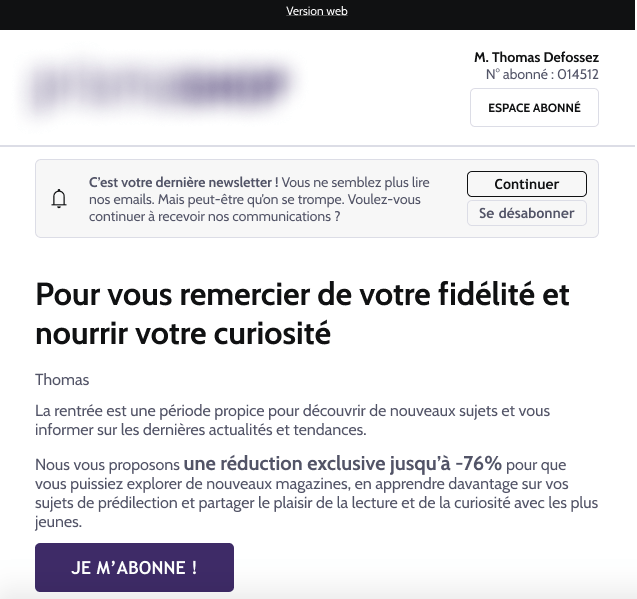
This type of block allows you to speak frankly to your contacts. This shows that you care about their commitment to your brand and respect for their personal data, and that you don't want to bother them any longer. As a reminder, it's best if a contact unsubscribe from your newsletters rather than complain about your e-mails. Complaints are among the worst factors in the decline of your reputation as a sender (along with bounces).
The good news about managing this block is that the whole process can be automated and customized.
- 3 months without opening or clicking: reactivation block displayed (see above)
- If you click onContinue"The subscriber returns to the assets segment.
- If you click onUnsubscribeThe "unsubscribe" link takes the subscriber to the unsubscribe form, and the subscriber is excluded from all communications.
- If you click on "Manage my communication preferences", you will be redirected to the preference center and action based on responses.
- If no opening or click: the subscriber will return to the "inactive" segment after 6 months.
Case studies
One of our customers tested the use of this type of block in its summer sales campaign. As is often the case, the reluctance lay in conversions: will displaying this type of block have an impact on sales?
Result:
| Target audience: | Inactive prospects emails with reactivation block | Inactive prospects emails without reactivation block | Ex-inactive customers emails with reactivation block |
|---|---|---|---|
| Open rate | 4,5% | 4,4% | 13,6% |
| Click-through rate | 0,7% | 0,6% | 0,9% |
| Number of clicks on "I want to continue receiving". | 11% clicks | Not Applicable | 7% clicks |
| Number of sales | 8 sales | 1 sale | 7 sales |
The answer is no. No impact on sales. Quite the opposite in fact.
3. Use commercial pressure in emailing
But still. You want to involve your inactive contacts in your promotional campaigns. Christmas is coming (it also works with Black FridayWe're here to help you get the most out of your holidays (summer sales, winter sales, Mother's Day, Father's Day, etc.). And this is a key period for you. You crack up, you're under pressure from your boss and you decide to send your promotional emails to your inactive customers.
To minimize risks, best practices include :
- isolate inactives in one or more segments
- play on the rhythm solicitations: don't send them all the campaigns you have planned, but only a few of them.
- then analyze campaign performance to know when to ease off when the risk is too great.
We explain all this in a live report:
Need help?
Reading content isn't everything. The best way is to talk to us.
4. Work on your email copywriting
In the section on preventive measures, we strongly recommend working on writing your emails. Of all the measures, this is the one you should focus on the most. Because that's what works best in the long term.
As a teacher at a university, I ask students (Generation Z) about their perception of commercial emails and newsletters. You can read their verbatims here and here. It's very funny and puts marketing decision-makers in their place.
They all distinguish between the brands they like "and others. They like brands because the wording of their messages touches them. These brands write their messages using words that reflect their personality and brand posture. They've worked on editorial asperities that make us enjoy reading them, feel attached to them and therefore stay active in their communications.
If you had to take just one piece of advice from this article, it would be this one.
This involves :
- work on your personality traits, brand posture and tone of voice
- build an editorial line: find topics that interest your readers
- from a promotional strategy to an editorial strategy
- Focus on writing each and every one of your emails
- A good welcome program
- The use of a preference management center
- Strong permission
- A simplified unsubscription process
Reactivate inactive contacts with an automated inactive address reactivation program
The first question to ask is: do you need to reactivate your inactive contacts?
That's a real question. We could very well identify them, isolate them in a segment and exclude this segment from the mailings. Period.
The more radical among us will say that there's no point in reactivating them. Insisting on a reactivation scenario is almost disrespectful. It's even more likely to damage your brand's reputation. Who likes to receive this type of email?
Others, perhaps more short-sighted or under pressure from their bosses, will say they need to generate sales and will go for it.
Challenge the usual reactivation scenarios
I'm going to challenge here an article written by Jonathan Loriaux (founder of Badsender) in 2013: "What strategies for managing inactives in email marketing?" Since then, a lot of water has passed under the bridge, and I'd like to take the liberty of questioning what he said 10 years ago:
- A common practice is to ask them the reason why your subscribers no longer open or click on your emails.
It's a way of proving that you're interested in their expectations. But be careful, ask this question if and only if you can be sure that your team will be able to regularly analyze responses and, above all, take corrective action.
Don't fool yourself. The main reason why your subscribers lose interest in your newsletters is because your content doesn't pique their interest. Will you then be in a position to shake up your mailing schedule? to change your offers? your tone of voice, your editorial line?
In short, don't ask this question just because an emailing consultant told you it was a good practice 😉 - Most reactivation programs (see examples below) are based on the sending ofa supposedly "exceptional" reduction and far more generous than usual.
Today, however, subscribers receive numerous promotions throughout the year. The promise of a "much more generous" discount is often not kept, due to a lack of profitability.
And then, do subscribers really feel re-engaged with a brand thanks to promotions?
In a world of sobriety, do promotions make sense? Don't today's consumers expect something else from brands?
We keep coming back to the link a brand needs to create with its customer, to that famous tone of voice and editorial line. - Another common practice is to reactivate subscribers on opening indicator.
So if they have open one of the reactivation program emails, they are reactivated.
If you've read the article so far, you'll have understood that opening is not a reliable indicator. The reactivity indicator should be the click.
So expect your volumes of reactivated contacts to be very low. That's just the reality of things; your program will have re-engaged very few people.
Resist the temptation: don't aim for volume, aim for quality!
Examples of reactivation emails for inactive or dormant email addresses
From: Twitch
Subject: thomdef60, VOILÀ a real discussion topic?
Preheader: Not known
They went so far as to personalize the nickname thomdef60 in the chat simulation. Pretty strong.
Sender: france.tv - Video Break
Subject: It's time to talk about it
Preheader: Don't miss the best extracts from france.tv
Hmm... I'm expecting a 2nd CTA next to "See our programs" which would be "I'm unsubscribing". I'd like them to tell us more about the strong stories, the discoveries...
What's been exciting in the last few weeks that would make me want to consume video again?
Sender: france.tv - L'Intégrale
Subject: Something new around here
Preheader: Don't miss the best of france.tv
The "what are you going to talk about at lunch?" angle is pretty good. I'd have seen it more in the subject line. And in the headline "there's something new around here". Same as above, an "I'm unsubscribing" CTA would have been nice next to the main CTA. And give more details about highlights, exclusives and new products to make people want to come back. Always work on the value of our product.
From: IKEA
Subject: REMI, would you like to remain an IKEA Family member?
Preheader: We miss you!
"We miss you" is a classic reactivation email that's sorely lacking in sincerity. Will scanning my loyalty card re-engage me with IKEA?
Examples of reactivation emails for inactive or ex-customers
Examples of B2C reactivation emails
Sender: Leboncoin
Subject: I can't believe you're missing this...
Preheader : Buy and pay online
The object is rather intriguing. That's a very good point. On the other hand, the preheader hasn't been worked on. Is this the kind of content that will win me back? I'm not sure.
From: Lucas de Helios
Subject: [NEW] Discover our latest features ?
Preheader: Hello, it's been a few
Not bad! New products can pique my interest. They tell me about product value. I get reassurance from customer testimonials. A reminder of their raison d'être and market differentiation. Even if, from a design and hierarchization of informationI've got a lot to say about the messages, which are pretty comprehensive.
From: pachamamai
Subject: Marion, we miss you! ?
Preheader : ? Free delivery for orders over €30
A very classic example: "we miss you" so they offer us a discount code. It certainly works in the short term. But in the long term, are the inactive really re-engaged? Or do they want information on how to consume better, the health risks associated with traditional cosmetics, etc.?
From: Inès - URIAGE
Subject: -20% for you, because we miss you...
Preheader : I wish to unsubscribe from the newsletter
The preheader is just right! I would even have written " No thanks, I'm unsubscribing. "
From: Le Fourgon
Subject: When are we coming back to your place?
Preheader : This is preheader text.
The object is as straightforward as could be. I love it! The non-existent preheader. It's a shame.
Sender: RecycLivre.com
Subject: 25 % discount with no minimum purchase, how about it?
Preheader: Not known
From: Laurent Mauriac
Subject: Where was she?
Preheader: Hello, Your one-month trial at Brief.me
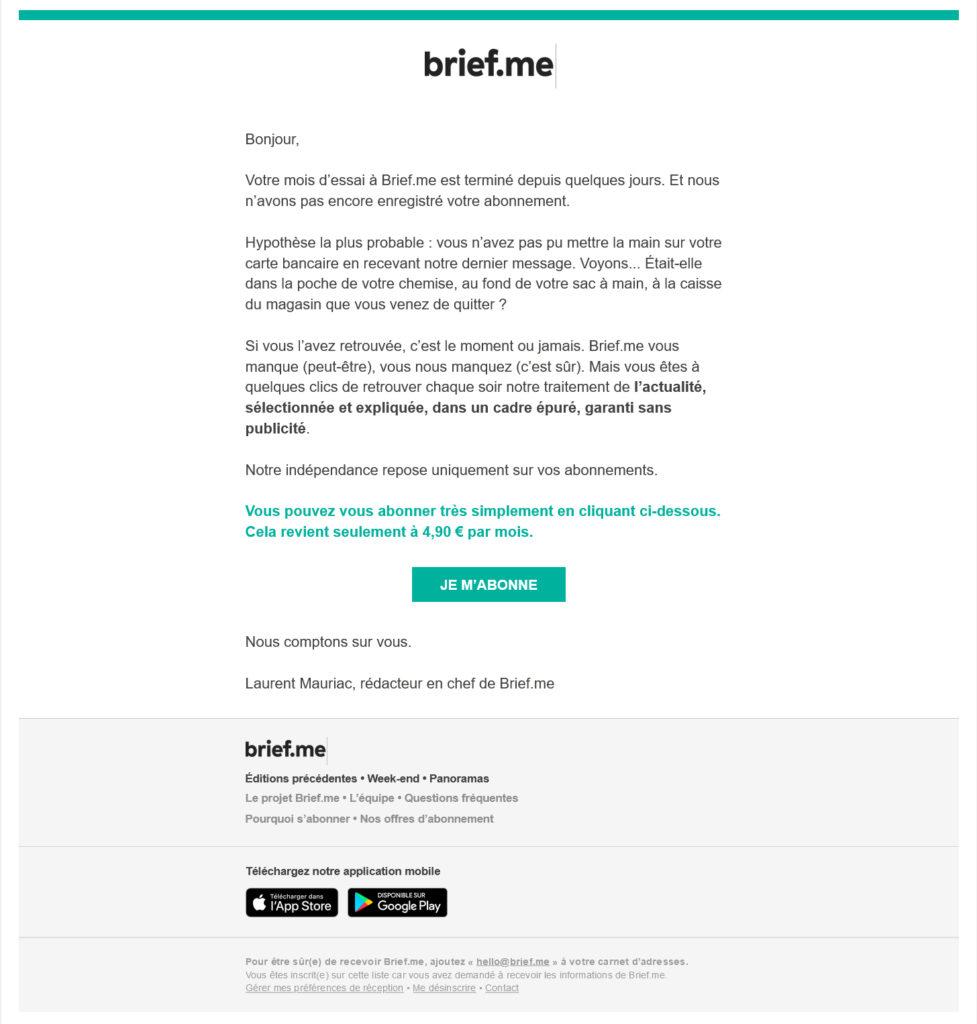
The object and content are nice. The text is simple and fluid. The fundamental aspect of subscription is recalled. I really like it!
Sample B2B reactivation emails
From: Les experts Webikeo
Subject: We miss you... find the top 3 most watched replays
Preheader: You're bound to find content that's just right for you
Apart from the "We miss you..." in the subject line, which has become too much of an insincere classic, recalling the top 3 best webinars is a good idea.
See other examples of emailings: newsletters, promotional emails, triggers, marketing automation, visit our email bank.
Badsender's conclusion on reactivating inactive contacts and customers in email marketing
First of all, we advise you to react quickly by displaying a reactivation block in the header of your newsletters or emailings. Then you can decide whether or not you want to set up a reactivation program. If you do, be realistic, frank and honest about how you reactivate your contacts. And opt for clicks as your reactivation indicator.
Then, take the time to work on the copywriting for each of your emails, whether it's a newsletter, a product email, a trigger or an automated email. Work on your tone of voice and your editorial line. That's how you'll eventually minimize the number of inactive contacts, and become a "one-stop shop". a brand we love" .

